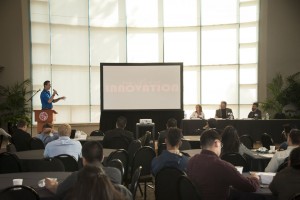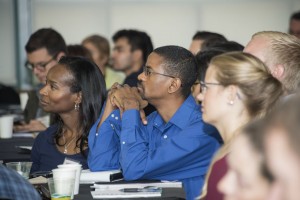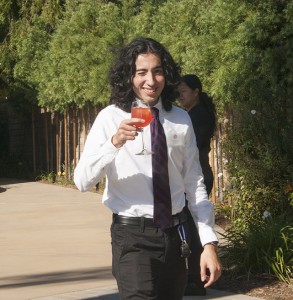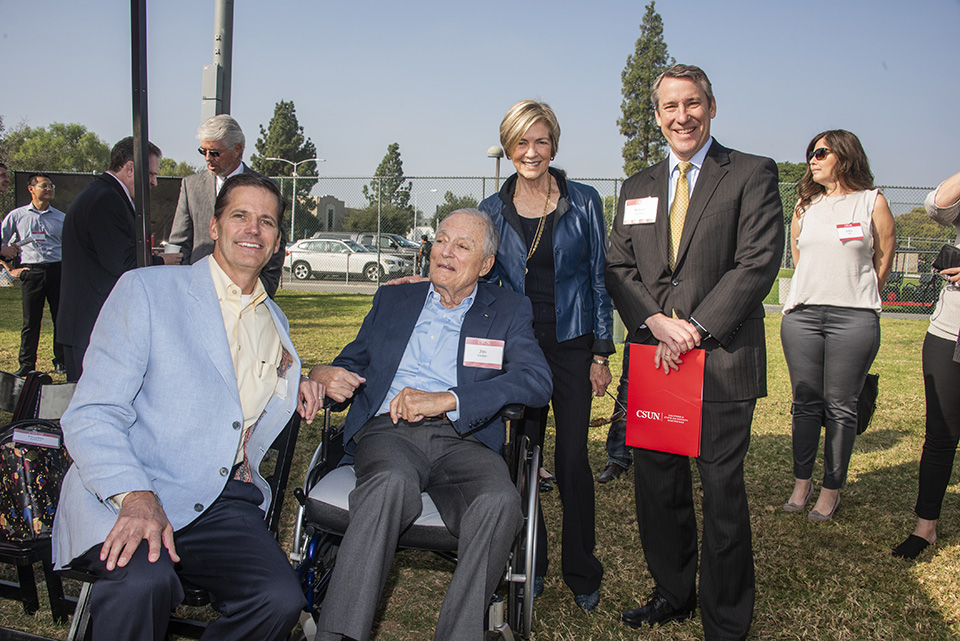
It was a dream come true for two California State University, Northridge sisters when they opened the doors of their custom branded apparel and fashion business in 1989. The sisters, alumnae Roya ‘82 (Civil Engineering) and Rochie Saberzadeh (Business) envisioned fashion as the perfect method to help build a strong visual identity for CSUN student community — to provide groups such as sororities, fraternities and school clubs with affordable advertising. “Fashion is a universal language” was the sisters’ belief.
Rochie’s Originals, as it is known today, has always been in Northridge. Originally, the store was located on Reseda Boulevard, north of Roscoe. Then, when the business took off, Rochie found a bigger location at the corner of Reseda and Plummer Streets, just a short walk from campus.
At the time, Roya, 29, and Rochie, 20, were inspired to start their business by the dedication and hard work of their parents and their parents’ philanthropic efforts and emphasis on giving back. “I would be nowhere today without the support of my parents,” Roya said. “They made everything flourish in my life.”
In college, Roya participated in the Society of Women Engineers among others, and Rochie was a member of the Sigma Kappa Sorority and a Little Sister to the Phi Delta Theta Fraternity. Rochie’s love for the Greek community and the lack of customized apparel and accessories was the source of her inspiration of starting the business.
Rochie’s promising life was cut short when she was killed during a scuba diving class in 1991, when she was 22, just short of graduation. Roya, then 31, was left to maintain the business. More than 27 years after her sister’s death, the bustling storefront and online business still bears Rochie’s name in her honor and legacy, and Roya carries her younger sister in her heart.
To honor Rochie’s memory, the Saberzadeh family contributes regularly to the sisters’ alma mater to assist CSUN students following a similar path: aspiring entrepreneurs. The family’s most recent contribution to CSUN was a Career Center Endowment in the Division of Student Affairs. The $25,000 pledge will provide long-term support to the university’s Career Center, which enhances the experience of CSUN students.
Career Center staff provides guidance to undergraduates on choosing a major and advice on making decisions, setting goals and planning. The center also offers multiple employment programs such as the On-Campus Interview Program, which encourages student job searches and connects students with professionals in the workforce, internships and other employment opportunities.
On Feb. 7, in recognition of the Saberzadeh family’s gift, Career Center officials named an interview room after them to honor their commitment to the university and its students. Programs supported by the family’s endowment will provide students with opportunities to gain the career readiness, leadership and entrepreneurial skills needed to be competitive in the job market.
“It’s an honor and privilege for my family as well as myself being a CSUN alum to make this contribution. For as long I can remember, we have been supporters of good education and empowering people. We strongly believe in the power of transforming lives through education and skills,” Roya Saberzadeh said. “We feel that the Career Center plays a crucial role in providing the tools and support needed for students to make the transition between learning and applying their knowledge in real life. As the future is crafted by empowered learners with a can do attitude and relevant skills, the Career Center is that catalyst to bridge the gap.”
“The great thing about our line of work is that we get to meet alumni and community members who do amazing things, that have wonderful stories about success, like the Saberzadeh family,” Director of Development Jerry De Felice ‘99 (Marketing), M.A. ‘02 (Education) said.
Career Center Director Ann Morey ‘97 (Education) agreed. “We’re really fortunate to have this gift, because over 400 students get interviewed here a year — it’s a really, really important part of what we do,” she said.
“It was a great honor and a great day to be able to dedicate a great space,” added William Watkins ‘74 (Urban Studies and Planning), vice president for student affairs and dean of students. “It really is a great inspiration to us to have an alumna who can come back as a role model.”
Roya said she will never forget the struggles she and her sister endured as young women starting a business, the trail she blazed and the lessons she learned — which inspired her to give back to Matadors today and for years to come. “Business is a sacrifice,” she said. “And it takes vision, perseverance and courage.
“My family and I are touched, humbled and delighted to be part of the career journey of many students that will come through these doors. We wish for this interview room to be the gateway to shape a magnificent future for all of them and their families.” she continued.
For more information on giving to CSUN’s Career Center, please contact jd@csun.edu or visit csun.edu/advancement/development














